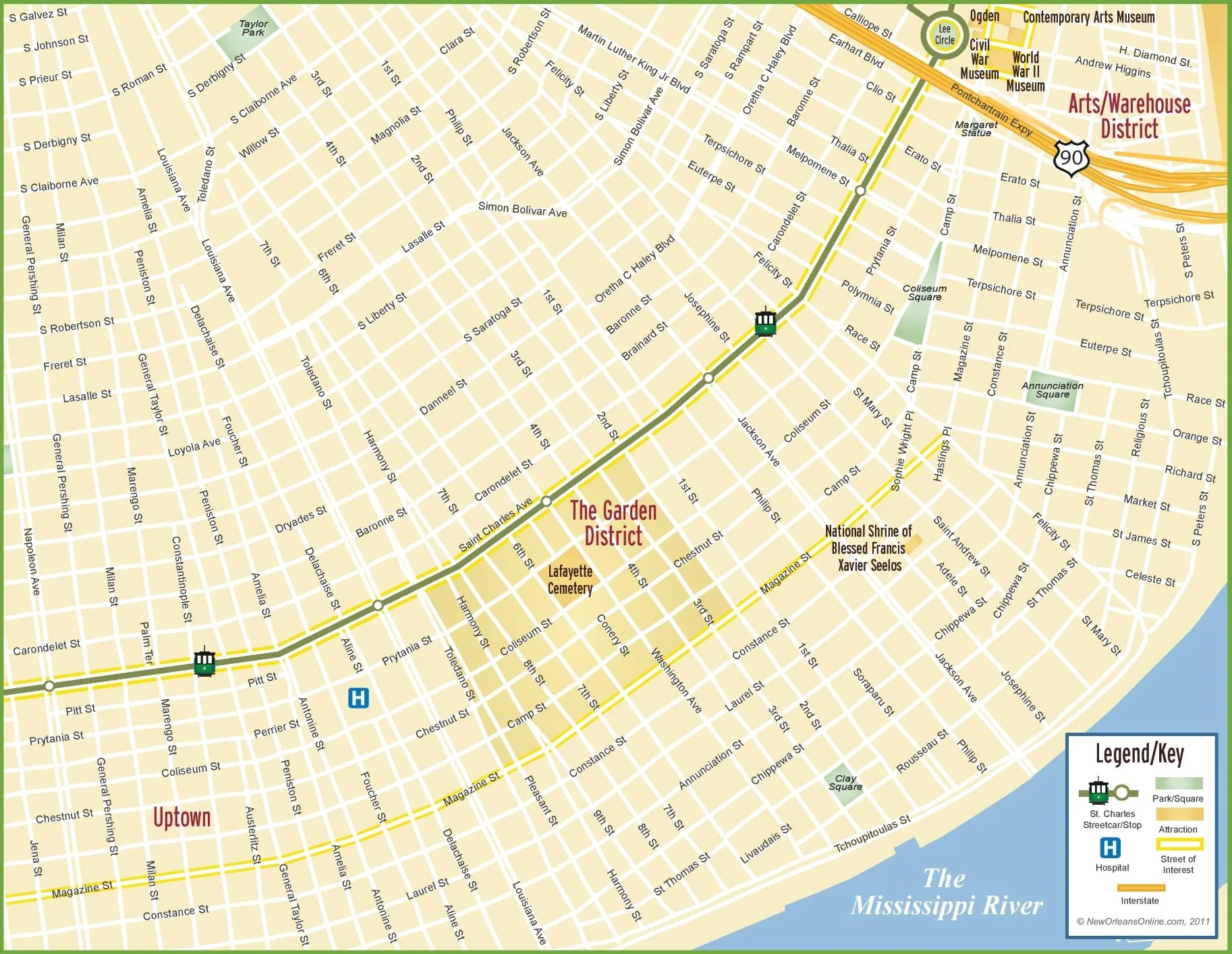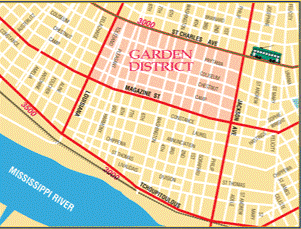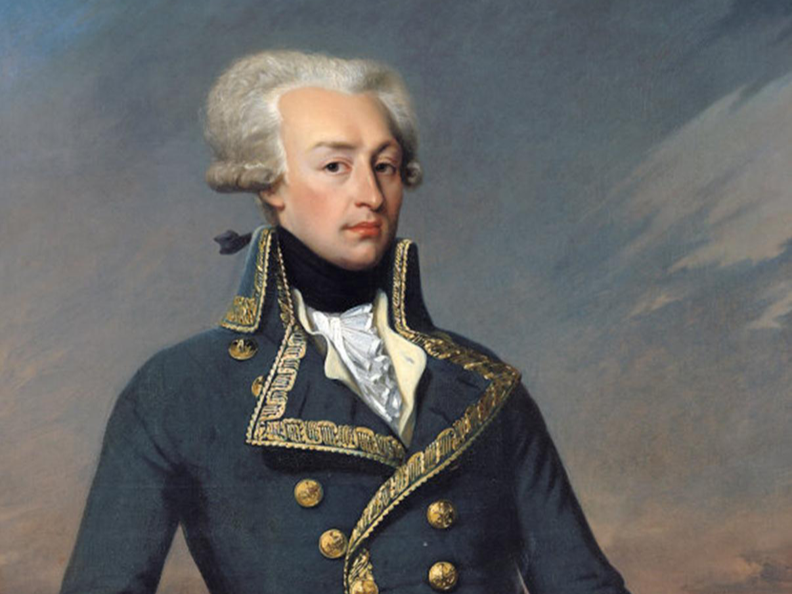New Orleans was founded in 1718 by Bienville, a French explorer and early governor of French Louisiana, on land inhabited by Native Americans. He chose a crescent bend in the Mississippi River as the location of New Orleans, because he thought it would be safe from tidal surges and hurricanes(!).
In 1720, Bienville's engineer drew plans for the new city, an eleven-by-seven block that's now known as the French Quarter (Vieux Carré). The area outside the small city eventually developed into to a number of plantations.
The French Quarter became crowded, and the city's elite didn't want to live amongst the Creoles and immigrants who resided in the Quarter. In the 1830s, the Livaudais Plantation outside New Orleans was divided and sold to these wealthy Americans.
The area was partitioned into blocks and became the City of Lafayette. In 1852, the City of Lafayette was annexed to New Orleans and became known as the Garden District.
In 1974 The entire Garden District became a National Historical Landmark.
SO WHERE ARE THE GARDENS?
Originally, there were only a couple houses per block, each with a large lot surrounded by landscaped English style gardens (mostly large lawns). However, by the late 1800s the city became increasingly urban, and the blocks were further subdivided and more homes were built.
As you explore the neighborhood, you'll discover a wide-variety of homes, ranging from mansions to much smaller shotgun cottages.



